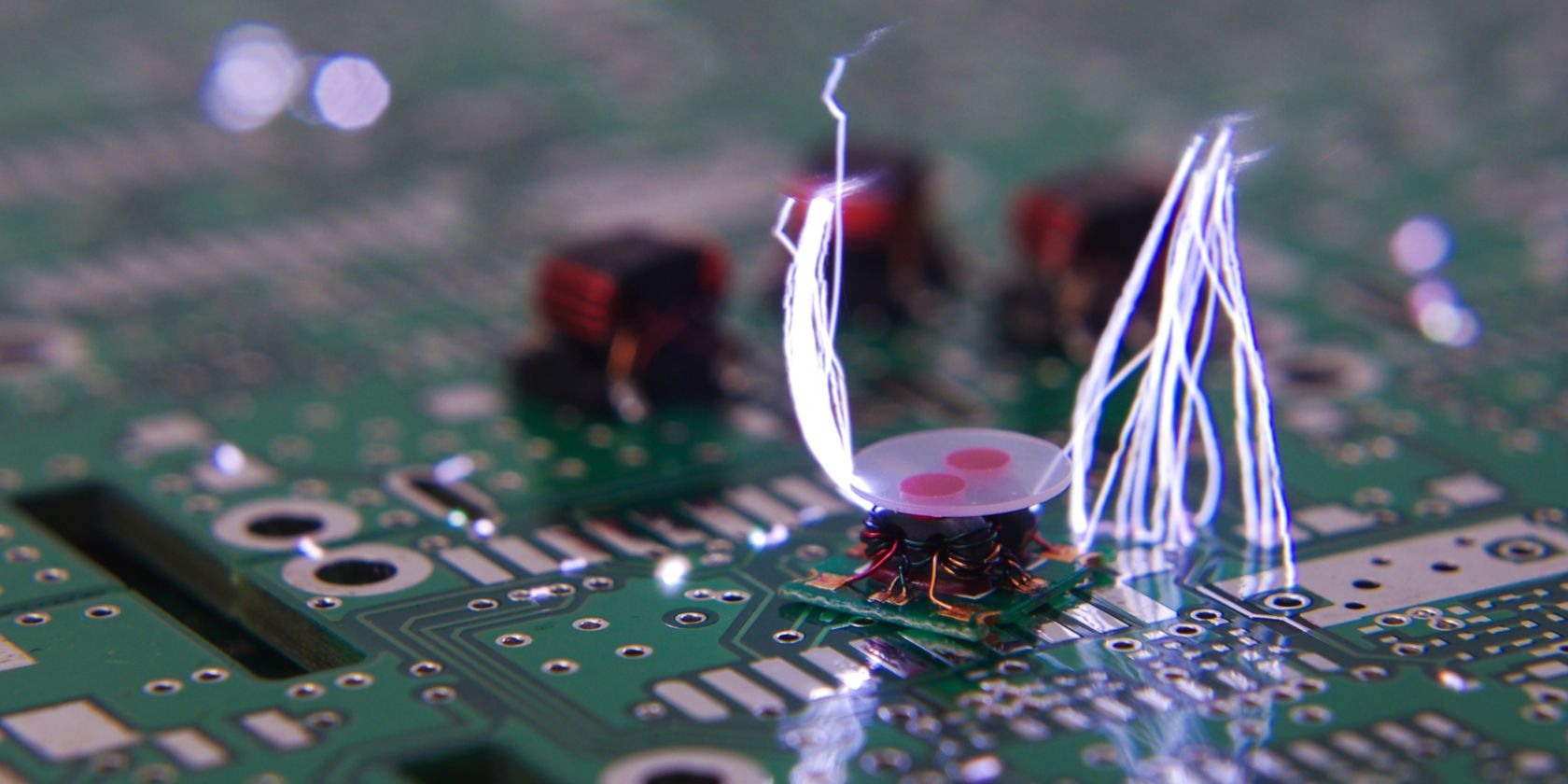Many of you will remember the classic classroom experiment; blow up a balloon, rub it against an item of clothing, and place it against your head. The result? Your hair will stand on end.
This is static electricity in action. But what exactly is static electricity, and why is it dangerous for your electronics?
What Is Electricity?
Everything around us in the universe is made up of atoms. The building blocks of our world, elements, feature known configurations of atoms. All currently-known elements are listed in the Periodic Table, a staple of high-school Chemistry classes.
An atom is made up of three parts; protons, neutrons, and electrons. A proton carries a positive charge, an electron carries a negative charge, and a neutron has no charge. Electricity is the presence or flow of charged particles---a proton or an electron.
We regularly experience electricity in materials made from metal. This is because they are conductors; materials that allow the free flow of electrons. The flow of these negatively charged electrons is known as electrical current.
What Causes Static Electricity?
Not all materials are conductors. That's why some materials are better for use in electrical settings. Rubber, for instance, is an insulator and does not allow the movement of electrons. On the other hand, a metal like aluminum does.
The previously mentioned balloon experiment is a visual way of showing how even insulators can transfer electrical charge. An atom is not electrically charged, as the protons, neutrons, and electrons keep the overall charge neutral.
However, each material contains varying amounts of atoms. When two insulators are rubbed together, they may either lose or gain electrons to become positively or negatively charged. In the case of our balloon, the clothing becomes positively charged, and the balloon negatively.
As the material is an insulator, the charge is unable to flow through the material. In other words, the charge is static. When you go to touch the balloon, the charge passes through you to the ground, resulting in a shock. This is static electricity.
Examples of Static Electricity
We encounter static electricity quite often in our day-to-day lives, even if we don't always notice it. Ever taken a walk on carpeted floor and then touched a metal object like a doorknob, only to be given a small shock? That's static electricity in action.
Then there are the times you did the laundry, only to remove the washing from the dryer to find it all stuck together. This is especially an issue with synthetic woolen jumpers. These types of clothing also generate static electricity when a plastic object passes through or along them.
The above examples would seem to make static electricity seem like a relatively unharmful issue. However, there are other notable examples of static electricity that show its full effect. For instance, lightning is caused by clouds rubbing against one another, generating static electricity.
If you've ever gone to fill up your car at a gas station, you'll have noticed signs both on your vehicle and the gas meter asking you to take note of static electricity. The nozzle is usually made of metal, but the surrounding materials aren't. As the nozzle passes into your car, it rubs along other materials, leaving it susceptible to the build-up of static electricity.
The Dangers of Static Electricity
In the case of the gas station, the pump and nozzle are grounded, a technique to neutralize static electricity. However, if they weren't, the static electricity could jump between the nozzle and the car. This transfer creates a spark, which could ignite the gas.
This example shows the unintended consequences of static electricity. Modern electronics are intricately designed items, often made of conductive materials to allow the flow of electrical current. The transfer of static electricity from an insulator to a conductor is called electro-static discharge (ESD).
Electrical circuits are made of many different materials, often engineered to precision at incredibly small scales. If ESD occurs, the damage caused will almost certainly not be visible. It might not even be evident at first, depending on what part of the circuitry was damaged. This is particularly challenging if you want to build your own PC, as you won't have prior performance to judge against.
However, the ESD will almost certainly have damaged something. The effect of this may only be noticeable in strange behavior like random reboots, or inconsistent performance. As you can't visually inspect components for damage, you may never determine the cause of these seemingly random errors.
That's why you will occasionally hear some people say that they've handled electrical components and hardware without ESD protection and had no issues. It's not because there weren't any; only that they didn't notice them at the time.
Three Ways To Get Rid of Static Electricity
There is no fool-proof way to get rid of static electricity. All materials, even our bodies, can generate a charge. The key is to minimize the risks of static electricity and ESD, especially when handling computer hardware and electrical components.
Earthing is one of the most effective methods for preventing ESD. Also known as grounding, this technique provides a direct connection to the ground, allowing the current to flow to the earth instead of other materials. All electrical appliances use earthing in combination with insulating materials to prevent us from being electrocuted every time we use them.
To ground yourself when handling electronic components, all you need is an anti-static wristband. These inexpensive bands slip around your wrist and attach to a suitable conductor. If you have generated static electricity, the conductive wristband provides an outlet for the charge.
1. Rosewill Anti Static Wrist Strap
A strap like the Rosewill Anti Static Wrist Strap won't break the bank but may save you hundreds of dollars in damaged electrical equipment. Place the strap around your wrist before touching any components and attach the alligator clip to a metal surface on your computer's case.
2. Static Guard 12-Pack
You can also minimize the build-up of static electricity, either by choosing appropriate clothing or using an anti-static spray like Static Guard.
3. LJY Set of 75 Antistatic Bags
The other products aim to prevent the transfer of static electricity from your body, but the components themselves also need protection when in transit. The best way to do that is by using an anti-static bag. A good choice here would be the LJY Set of 75 Antistatic Resealable Bags. There are 25 bags of each of the three sizes, making them ideal for a whole range of components.
Understanding Static Electricity
Static electricity is a complicated and tricky challenge when it comes to our modern electronic devices. One improper static electric charge could bring even the most sophisticated machinery to its knees.
Before embarking on any electrical DIY projects, or computer upgrades, you need to be sure you're protected. Only then can you can start thinking about things to do with your old RAM modules, or how to clean dust from your noisy PS4.
Image Credit: amphoto/Depositphotos



